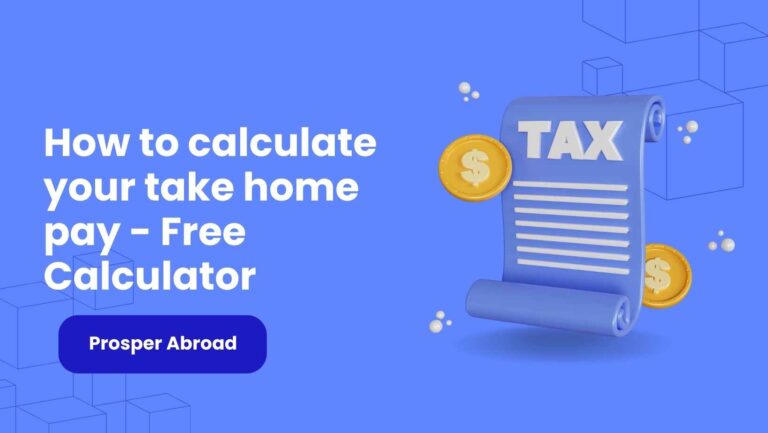Introduction
When financial news networks discuss the performance of “the market,” they are often referring to the S&P 500, a powerful benchmark for the U.S. economy. This index has become a cornerstone of modern investing, with figures like Warren Buffett famously recommending a low-cost S&P 500 index fund as a sensible choice for the average person looking to build long-term wealth. For a beginner in the United Kingdom, however, the prospect of investing in this American giant can seem daunting, clouded by questions about platforms, taxes, and currency fluctuations.
This article serves as a comprehensive, step-by-step guide designed specifically for the UK beginner, aiming to demystify the entire process. It will explain precisely how to invest in the S&P 500, moving from foundational concepts to practical execution. The analysis will cover what the index is and how it works, explore its significant advantages and inherent risks, navigate the landscape of UK-specific investment accounts and platforms, and provide a framework for selecting the right fund. By the end of this report, a novice investor will be equipped with the knowledge to make informed, confident decisions.
Part I: The Foundation – Understanding the S&P 500
Section 1: What is the S&P 500?
Defining the Index
The Standard & Poor’s 500, or S&P 500, is a stock market index that tracks the performance of 500 of the largest and most influential publicly-traded companies listed on stock exchanges in the United States. It is crucial to understand that the index itself is simply a measurement tool—a calculated number represented by tickers like ^GSPC,.INX, or SPX—and not an asset that can be purchased directly. Instead, investors gain exposure by purchasing shares in funds that are designed to replicate its performance.
Widely regarded as the primary gauge for large-cap U.S. equities, the S&P 500 represents approximately 80% of the total market capitalisation of all U.S. public companies, making it a powerful proxy for the overall health and sentiment of the American corporate economy.
The Engine Room: How the Index is Constructed
The composition of the S&P 500 is not arbitrary; it is governed by a strict set of rules and maintained by a committee at S&P Dow Jones Indices.
- Market-Capitalisation Weighting: The S&P 500 is a market-capitalisation-weighted index. This means that companies with a larger total stock market value (calculated by multiplying the share price by the number of outstanding shares) have a greater impact on the index’s movement. For example, a 1% change in the value of Microsoft has a much larger effect on the index than a 1% change in a smaller constituent. This method ensures the index reflects the current economic weight of its largest companies.
- Eligibility Criteria: To be considered for inclusion, a company must meet stringent criteria that ensure its quality, scale, and liquidity. These primary requirements include being domiciled in the U.S., having a market capitalisation of at least US$20.5 billion (as of early 2025), maintaining high levels of liquidity and public float, and demonstrating a history of positive earnings. These rules act as a quality filter, meaning the index is composed of established, financially sound businesses.
A Look at the Top Constituents and Sector Composition
The market-cap weighting leads to a significant concentration at the top of the index. The ten largest companies, including household names like Microsoft, Nvidia, Apple, and Amazon.com, account for approximately 38% of the index’s total market capitalisation. This concentration in mega-cap stocks, particularly in the technology sector, is a defining feature of the modern S&P 500.
The index provides exposure across 11 official Global Industry Classification Standard (GICS) sectors. However, this diversification is not evenly distributed. As of mid-2025, the sector weightings are approximately:
- Information Technology: 31.6%
- Financials: 14.3%
- Health Care: 9.6%
- Communication Services: 9.6%
- Consumer Discretionary: 10.7%
- Industrials: 8.7%
- Consumer Staples: 5.9%
- Energy: 3.0%
- Utilities: 2.5%
- Real Estate: 2.1%
- Materials: 1.9%
These figures clearly illustrate the index’s heavy tilt towards technology, which, combined with financials and health care, makes up well over half of the index’s value.
Section 2: The Investment Case for the S&P 500: Pros, Cons, and Key Risks
Investing in the S&P 500 has become a cornerstone strategy for millions, but it is essential to approach it with a clear understanding of both its compelling advantages and its inherent risks.
The Pros: Why It’s So Popular
- Instant Diversification: With a single investment, a beginner can gain exposure to 500 of the leading companies across all major sectors of the world’s largest and most dynamic economy. This immediately reduces the risk associated with investing in a small number of individual stocks.
- Access to Global Innovation: The S&P 500 is home to a high concentration of the world’s most innovative and influential companies. It provides direct exposure to the giants of technology (Apple, Microsoft), e-commerce (Amazon), artificial intelligence (Nvidia), and sustainable energy (Tesla), which are at the forefront of shaping the global economy.
- Strong Historical Performance: The index has a long and proven track record of generating substantial long-term returns. Since its inception in 1926, the S&P 500 has delivered a compound annual growth rate of approximately 9.8% (including dividends). Over the last ten years, its growth has been 186.5%. While this past performance is no guarantee of future results, it demonstrates the powerful wealth-building potential of the U.S. stock market over time.
- Low-Cost and Convenient: As endorsed by Warren Buffett, investing via a low-cost S&P 500 tracker fund is one of the most efficient methods for a beginner to build wealth. It sidesteps the high fees and consistent underperformance that plague many actively managed funds, allowing investors to keep more of their returns.
- Built-in Adaptability: The index is not static. It undergoes a process of “creative destruction” whereby underperforming companies that no longer meet the eligibility criteria are removed and replaced by new, dynamic, and high-growth companies. This self-cleansing mechanism ensures the index remains a reflection of the most resilient and forward-thinking sectors of the economy over time.
The Cons and Inherent Risks: A Balanced View
- Market Risk: This is the most fundamental risk. The S&P 500 tracks the broad U.S. stock market. If the market as a whole enters a downturn due to a recession, geopolitical event, or financial crisis, the value of an S&P 500 investment will inevitably fall with it.
- Concentration Risk: The market-cap weighting method leads to a heavy concentration in a few mega-cap technology stocks. This means the performance of the index is disproportionately influenced by the fortunes of this single sector. A significant downturn in big tech could drag down the entire index, diminishing the diversification benefits offered by the other 490+ companies.
- The “Large-Cap” Blind Spot: By definition, the index only includes large-cap companies. This means investors miss out entirely on the potential for higher growth that can be found in the thousands of U.S. small and mid-sized companies, which constitute a significant portion of the overall economy.
- Lack of True International Diversification: The S&P 500 is 100% focused on U.S.-domiciled companies. While many of these firms are multinational corporations with global revenues, this approach provides no direct investment in companies listed in Europe, Japan, China, or other emerging markets. A truly diversified global portfolio would include exposure to these regions as well.
- Currency Risk for UK Investors: This is a critical and often overlooked risk for British investors. The S&P 500 and its constituent stocks are priced in U.S. dollars (USD). When a UK investor buys an S&P 500 fund, their pounds (GBP) are converted to dollars. The final return on their investment depends not only on the performance of the index but also on the GBP/USD exchange rate. If the pound strengthens against the dollar, it will reduce the value of the U.S. investment when converted back into sterling. This can erode or even erase gains made by the index itself. This risk will be explored in greater detail in Part III.
Part II: The Mechanics – Investing from the UK
For a UK-based investor, understanding the available accounts and investment vehicles is a critical step. The structure you choose to hold your investment in can have as much impact on your long-term returns as the investment itself, primarily due to the significant tax advantages offered by the UK government.
Section 3: Your Tax-Efficient Toolkit: Choosing the Right UK Investment Account
The UK offers several types of accounts, or “tax wrappers,” that can shield investment returns from tax, allowing your wealth to compound more effectively over time.
The Stocks and Shares ISA (Individual Savings Account)
The Stocks and Shares ISA is the primary and most flexible tax-efficient account for the majority of UK investors.
- Key Benefit: Its main advantage is that any returns are completely free from UK tax. This means no Capital Gains Tax on your profits and no further tax on any dividend income you receive. Furthermore, you do not need to declare any ISA investments or gains on your annual tax return.
- Annual Allowance: There is a limit to how much you can contribute each tax year. The current annual ISA allowance is £20,000. The tax year runs from 6 April to 5 April.
- Eligibility and Flexibility: To open a Stocks and Shares ISA, you must be a UK resident and aged 18 or over. Unlike a pension, you can withdraw money from an ISA at any time, although it is designed for long-term investing.
The SIPP (Self-Invested Personal Pension)
A SIPP is a personal pension designed for individuals who want to make their own investment decisions for retirement.
- Key Benefit: The standout feature of a SIPP is the generous tax relief on contributions. For every £80 a basic-rate taxpayer contributes, the government adds £20, effectively turning your £80 into a £100 investment. Higher-rate and additional-rate taxpayers can claim back even more through their tax returns, making it an exceptionally efficient way to save for the long term.
- Growth and Withdrawals: Inside the SIPP, your investments grow free from UK capital gains and dividend tax, just like an ISA. The major restriction is that you cannot normally access the money until you reach age 55 (this is set to rise to 57 from 2028). When you do access it, you can typically take 25% of the pot as a tax-free lump sum, with the remaining withdrawals taxed as income.
- Annual Allowance: The amount you can contribute to all your pensions in a tax year and receive tax relief on is generally limited to £60,000 or 100% of your UK earnings, whichever is lower.
The GIA (General Investment Account)
A GIA is a standard investment account with no special tax status.
- Flexibility: Its main advantage is its lack of contribution limits; you can invest as much as you like.
- Tax Implications: This flexibility comes at a cost. Any gains and income are subject to tax. Profits from selling investments are liable for Capital Gains Tax (CGT) above the annual allowance (currently £3,000). Dividend income is also taxable above its separate annual allowance (currently £500).
- When to Use It: A GIA is typically only used by investors who have already made full use of their ISA and SIPP allowances for the tax year.
For a beginner, the tax implications create a clear hierarchy for allocating capital. The first and most impactful optimization an investor can make is to maximise tax efficiency. Therefore, a logical pathway emerges:
- Prioritise the Stocks and Shares ISA: Use your £20,000 annual allowance first for any medium- to long-term goals where you might need access to the funds before retirement age.
- Utilise the SIPP for Retirement: For dedicated, long-term retirement savings, the SIPP is unparalleled due to the upfront boost from tax relief.
- Use a GIA as an Overflow: Only once both the ISA and SIPP allowances have been fully utilised for the year should a beginner consider investing through a GIA.
Section 4: The Investment Vehicles: ETFs vs. Index Funds
As established, you cannot buy the S&P 500 index directly. You must purchase shares in a fund that tracks its performance. For UK investors, the two most common and suitable vehicles for this are Exchange-Traded Funds (ETFs) and traditional index funds, which are typically Open-Ended Investment Companies (OEICs).
Exchange-Traded Funds (ETFs)
ETFs are investment funds that are bought and sold on stock exchanges, just like the shares of an individual company.
- Key Features: Because they trade on an exchange, their price fluctuates throughout the day. An investor can buy or sell an ETF at any point during market hours via an investment platform or broker. This process usually incurs a dealing charge, and there is a small difference between the buying price (the ‘ask’) and the selling price (the ‘bid’), known as the spread.
Index Funds (OEICs)
These are the more “traditional” form of mutual fund. Investors buy units in the fund, and the fund manager pools this money to invest in the underlying assets.
- Key Features: Unlike ETFs, OEICs are not traded on an exchange in real-time. They are priced just once per day, after the market closes. When you place an order to buy or sell, it is executed at this next valuation point. A significant advantage on many UK platforms is that there is often no explicit dealing charge for buying or selling OEIC funds.
Key Differences for the Beginner
For a long-term, buy-and-hold investor, the ability to trade ETFs intra-day is largely an academic point. The most significant practical difference comes down to the interaction between the fund’s own charges and the fee structure of the investment platform you use. ETFs often have the lowest ongoing charges but may attract platform dealing fees. Index funds might have slightly higher ongoing charges but are often free to trade on the platform. The “cheapest” overall option is therefore dependent on the platform chosen, a critical factor that will be analysed in Section 7. For beginners looking to set up a simple monthly investment, an index fund can feel more straightforward as it’s a “set and forget” process without the need to actively place trades each month.
Part III: Making Your Selection
Having established the foundational knowledge, the next stage is to delve into the specific fund choices and platform considerations that a UK investor will face. This section provides the practical details needed to move from theory to action.
Section 5: A Deep Dive into S&P 500 Funds for UK Investors
When browsing for S&P 500 funds, a beginner will encounter several key terms that define how a fund operates. Understanding this jargon is essential for making an informed choice.
Decoding the Jargon
- Accumulating (Acc) vs. Distributing (Dist): This is a critical distinction that determines how dividends are handled.
- Distributing (Dist) or Income (Inc): These funds pay out any dividends generated by the underlying companies as cash into your investment account. This can provide a regular income stream.
- Accumulating (Acc): These funds automatically reinvest the dividends back into the fund on your behalf. This buys more shares of the fund, which can powerfully enhance long-term growth through compounding without the investor needing to take any action or incur further trading costs. For most beginners with a long-term growth objective, accumulating funds are the simpler and more efficient option.
- Replication Method: Physical vs. Synthetic: This describes how the fund tracks the index.
- Physical Replication: The fund manager buys the actual shares of the companies in the S&P 500. This can be done through ‘full replication’, where they buy all 500 stocks in their correct proportions, or ‘optimised sampling’, where they buy a representative sample of stocks to mirror the index’s characteristics. Physical replication is transparent and easy to understand.
- Synthetic Replication: The fund enters into a contract (a derivative known as a swap) with a financial institution, typically a large investment bank. The bank agrees to pay the fund the return of the S&P 500 index in exchange for a fee. While this can be very efficient and lead to lower tracking errors, it introduces counterparty risk (the risk that the bank could default on its obligation). For beginners, the transparency of physical replication is often preferred.
- Domicile and UCITS: Most ETFs available to UK retail investors are ‘UCITS’ compliant, which stands for Undertakings for Collective Investment in Transferable Securities. This is a European Union regulatory framework, adopted by the UK, that provides a high level of investor protection. These funds are typically domiciled (legally based) in Ireland or Luxembourg, which offers certain tax advantages related to withholding tax on dividends from U.S. stocks, making them more efficient than holding U.S. domiciled funds directly.
Comparative Analysis of Popular UK S&P 500 Tracker Funds
To translate these concepts into actionable choices, the table below compares several of the most popular and widely available S&P 500 tracker funds for UK investors. It highlights the key metrics a beginner should consider.
| Fund Name | Ticker (LSE) | Provider | Ongoing Charge (OCF/TER) | Dividend Policy | Replication | Fund Size (EUR bn) | |
|---|---|---|---|---|---|---|---|
| iShares Core S&P 500 UCITS ETF | CSPX / IUSA | iShares | 0.07% | Acc / Dist | Physical | 99.7 | View More |
| Vanguard S&P 500 UCITS ETF | VUAG / VUSA | Vanguard | 0.07% | Acc / Dist | Physical | 20.7 / 39.6 | View More |
| Invesco S&P 500 UCITS ETF | SPXS / SPX5 | Invesco | 0.05% | Acc / Dist | Synthetic | 26.9 / 5.7 | View More |
| SPDR S&P 500 UCITS ETF | SPXP / SPY5 | SPDR | 0.03% | Acc / Dist | Physical | 7.9 / 13.3 | View More |
| HSBC S&P 500 UCITS ETF | HSPA / HSPX | HSBC | 0.09% | Acc / Dist | Physical | 0.4 / 6.2 | View More |
| UBS S&P 500 Index Fund | N/A (OEIC) | UBS | 0.09% | Acc / Inc | Physical | 1.7 (GBP bn) | View More |
| Legal & General US Index Trust | N/A (OEIC) | L&G | 0.05% (Net) | Acc / Inc | Physical | Varies | View More |
Data compiled from sources. Fund sizes are approximate and subject to change.
This comparison reveals several key points. Firstly, the market is highly competitive, with ongoing charges being exceptionally low—as little as 0.03% per year. Secondly, a few large providers, namely iShares (by BlackRock) and Vanguard, dominate the market in terms of assets under management. Finally, investors have a clear choice between physically and synthetically replicated funds, and between accumulating and distributing share classes for most products.
Section 6: Managing the Pound-Dollar Problem: Currency Hedging
For a UK investor buying a US-based asset, currency risk is a significant and unavoidable factor that can have a dramatic impact on returns.
Explaining Currency Risk in Detail
When you invest in a standard S&P 500 tracker fund, you are undertaking two distinct bets: one on the performance of the U.S. stock market, and another on the exchange rate between the U.S. dollar (USD) and the British pound (GBP).
Consider a simple scenario:
- You invest £1,000 into an unhedged S&P 500 ETF. The exchange rate is £1 = $1.25. Your investment is worth $1,250.
- Over the next year, the S&P 500 index performs well, rising by 10%. Your investment is now worth $1,375.
- However, during the same period, the pound strengthens against the dollar, and the new exchange rate is £1 = $1.375.
- If you were to sell your investment and convert the proceeds back to your home currency, your $1,375 would now only be worth £1,000.
In this case, the entire 10% gain from the stock market was completely negated by the adverse movement in the currency market. Conversely, if the pound had weakened against the dollar, your returns would have been amplified. This demonstrates that for a UK investor, the return from an unhedged US fund is a combination of asset performance and currency fluctuation.
The Solution: Currency-Hedged ETFs
To address this, fund providers offer currency-hedged versions of their ETFs. These funds use financial instruments called forward contracts to lock in an exchange rate, effectively aiming to strip out the impact of currency movements. The goal is to provide a return that more closely matches the local performance of the S&P 500 index itself, regardless of what happens to the GBP/USD exchange rate.
The Trade-Offs of Hedging
This protection comes with trade-offs:
- Higher Cost: Implementing a hedging strategy is not free. As a result, currency-hedged ETFs have higher ongoing charges (TERs). For example, the standard iShares S&P 500 ETF (CSPX) has a TER of 0.07%, while its GBP-hedged equivalent (IGUS) has a TER of 0.20%.
- Potential for Tracking Error: The hedging process is not always perfect and can lead to small discrepancies, causing the fund to slightly underperform a perfectly hedged return.
- No Upside from Currency: Hedging is a double-edged sword. While it protects from adverse currency movements, it also eliminates the potential gains. If the pound weakens against the dollar, an unhedged investor receives a significant boost to their returns, an upside that the hedged investor forgoes.
The decision to hedge depends on an investor’s time horizon and risk tolerance. For very long-term investors (e.g., 10+ years), many argue that currency fluctuations tend to even out over time, and the persistent higher cost of hedging may outweigh the benefits. For investors with a shorter time frame or those who are particularly concerned about a strengthening pound, a hedged ETF can offer valuable peace of mind.
To make this choice clearer, the table below provides a direct comparison of an unhedged and a GBP-hedged S&P 500 ETF from the same provider.
| Feature | Unhedged Example (iShares Core S&P 500 UCITS ETF) | GBP Hedged Example (iShares S&P 500 GBP Hedged UCITS ETF) | Key Difference for the Investor |
|---|---|---|---|
| Ticker (LSE) | CSPX (Acc) / IUSA (Dist) | IGUS (Acc) / IGPU (Dist) | These are distinct products designed for different risk management strategies. |
| Ongoing Charge (TER) | 0.07% | 0.20% | Hedging carries a direct, additional cost of 0.13% per year, which will drag on performance. |
| Investment Objective | The choice depends on an investor’s view on future currency movements or their desire to remove that variable from the equation. | To track the S&P 500’s performance while minimising the impact of GBP/USD currency fluctuations. | One exposes you to both market and currency risk; the other seeks to isolate market risk. |
| When it may outperform | When the Pound (GBP) weakens against the Dollar (USD). | When the Pound (GBP) strengthens against the Dollar (USD). | The choice depends on an investor’s view on future currency movements, or their desire to remove that variable from the equation. |
For illustrative purposes
Section 7: Choosing Your Gateway: A UK Investment Platform Comparison
The investment platform is the online service, or ‘shop’, where an investor will open their chosen account (ISA, SIPP) and purchase their S&P 500 fund. The selection of a platform is a critical decision, as fees vary significantly and can have a substantial impact on long-term investment returns.
The Three Layers of Fees
An investor must be aware of three distinct types of charges:
- Platform Fee: This is the core charge for using the service. It can be a percentage of your total portfolio value (e.g., 0.15% per year on the Vanguard Investor platform), a fixed monthly or annual fee (e.g., Interactive Investor’s subscription plans), or in some cases, £0 (e.g., Trading 212).
- Fund Charge (OCF/TER): This is the fee charged by the fund manager (e.g., iShares, Vanguard, HSBC) for managing the fund. This charge is embedded in the fund’s price and is paid regardless of which platform is used.
- Transactional Fees: These are charges incurred when making trades. They include dealing fees for buying and selling investments (particularly ETFs) and foreign exchange (FX) fees for converting currency.
Analysis of Major UK Platforms for Beginners
The UK market offers a diverse range of platforms, each with a different fee structure and service level.
- Vanguard Investor: This platform is operated by the fund manager Vanguard. Its key advantage is a low platform fee of 0.15% per annum, which is capped at a maximum of £375 per year across all accounts an individual holds. The main limitation is that it only offers Vanguard’s own range of funds and ETFs. It is an excellent, low-cost choice for beginners who are happy to invest exclusively in Vanguard’s S&P 500 products (like VUSA or VUAG).
- Hargreaves Lansdown (HL) & AJ Bell: These are the UK’s largest traditional, full-service investment platforms. They offer a vast selection of funds, ETFs, and individual shares. Their platform fees are typically percentage-based for holding funds (e.g., 0.45% at HL on the first £250,000). However, a crucial distinction is that for holding ETFs and shares, this fee is capped at £45 per year in a Stocks and Shares ISA and £200 per year in a SIPP. They charge dealing fees for buying and selling ETFs (e.g., £11.95 per trade at HL), though these can be lower for regular monthly investments.
- Trading 212 & Freetrade: These are modern, app-based platforms that have gained popularity by offering commission-free trading. They typically have no platform fees and no dealing fees for buying and selling ETFs. Their primary cost for international investments is the
Foreign Exchange (FX) fee, charged when converting GBP to another currency to buy an asset. This can range from 0.15% to over 1.5%. However, this fee can be avoided by ensuring you only buy UK-listed, GBP-denominated funds (like VUSA or IGUS), for which no currency conversion is required on the platform’s end. - Interactive Investor (ii): This platform operates on a flat-fee subscription model, with plans starting from £4.99 per month. This structure is generally very cost-effective for investors with large portfolios, as the fee does not increase with the portfolio’s value. Conversely, it can be relatively expensive for beginners starting with small amounts, for whom a percentage-based fee would be lower.
Platform Cost Simulation
| Platform | Investment | Platform Fee | Dealing Fees | Total Annual Cost (Year 1) |
|---|---|---|---|---|
| Scenario 1: £1,200 invested (£100/month) in Vanguard S&P 500 ETF (VUAG) | ||||
| Vanguard Investor | £1,200 | £48 (fixed fee for portfolios under £32k) | £0 (free regular investing) | £48.00 |
| Hargreaves Lansdown (ISA) | £1,200 | £5.40 (0.45% of average balance) | £0 (free regular investing) | ~£5.40 |
| Trading 212 (ISA) | £1,200 | £0 | £0 | £0.00 |
| Scenario 2: £50,000 lump sum invested in iShares S&P 500 ETF (CSPX) | ||||
| Vanguard Investor | £50,000 | £75 (0.15%) | N/A (cannot buy iShares funds) | N/A |
| Hargreaves Lansdown (ISA) | £50,000 | £45 (CAPPED annual fee for ETFs) | £11.95 (one-off online trade) | £56.95 |
| Interactive Investor (Investor Plan) | £50,000 | £143.88 (£11.99/month) | £3.99 (one-off online trade) | £147.87 |
Costs are illustrative and do not include the underlying. Platform fees are subject to change.
The simulation clearly demonstrates the importance of matching the platform to the investor’s situation. For a beginner starting with small monthly contributions, Trading 212 or Hargreaves Lansdown appear highly competitive. For an investor with a larger lump sum to deploy into ETFs, the capped fee structure of Hargreaves Lansdown offers compelling value compared to the flat-fee model of Interactive Investor or the uncapped percentage fee of other platforms.
Section 8: Your Action Plan: How to Invest in the S&P 500, Step-by-Step
This sequence provides a logical path from decision to execution.
- Define Your Goal and Time Horizon: The first step is always to ask why you are investing. Is this money for a house deposit in seven years, or for retirement in thirty? The answer determines your investment time horizon, which in turn dictates your capacity for risk and the most appropriate account to use. Equity investing is best suited for goals that are at least five, and ideally ten or more, years away.
- Choose Your Account: Based on your goal, select the most tax-efficient account. For most, this will be a Stocks and Shares ISA for its flexibility and tax-free growth, or a SIPP for dedicated retirement savings to capture the upfront tax relief.
- Select Your Platform: Using the analysis and cost simulation in Section 7, choose the platform whose fee structure is the most economical for your intended investment amount and frequency.
- Open and Fund Your Account: The account opening process is typically done online and requires personal details such as your address, date of birth, and National Insurance number. Once the account is open, you can deposit funds via debit card or bank transfer.
- Choose Your Specific Fund: Revisit the comparative table above. For the majority of beginners seeking long-term growth, a low-cost, physically replicated, accumulating ETF from a major provider is an excellent starting point. Tickers like VUAG (Vanguard S&P 500 UCITS ETF Acc) or CSPX (iShares Core S&P 500 UCITS ETF Acc) are popular and fit this profile.
- Place Your Trade: Log in to your chosen platform, use the search function to find your chosen fund by its name or ticker symbol (e.g., ‘VUAG’), select the ‘buy’ option, specify the amount you wish to invest, and execute the trade.56
Conclusion & Final Thoughts
For a beginner investor in the UK, the S&P 500 represents a powerful and accessible tool for building long-term wealth. It offers instant diversification across hundreds of America’s leading companies, providing exposure to a hub of global innovation and a track record of strong historical returns. While the process may initially seem complex, it can be broken down into a series of logical and manageable steps.
The most effective way for a UK beginner to how to invest in the S&P 500 is by using a low-cost tracker fund, either an ETF or a traditional index fund. This investment should be held within a tax-efficient wrapper, prioritising a Stocks and Shares ISA for accessible savings and a SIPP for dedicated retirement planning. The choice of investment platform is crucial, with the optimal provider depending on the individual’s investment size and frequency; what is cheapest for a small monthly saver may not be cheapest for someone investing a large lump sum. Finally, special consideration must be given to currency risk, with a conscious choice made between standard unhedged funds and more expensive currency-hedged alternatives.
By following a clear action plan, embracing the disciplined strategy of regular investing, and maintaining a steadfast long-term perspective, a novice investor is well-equipped to harness the power of the S&P 500 and begin their journey towards achieving their financial goals.
Final Checklist for Action
- Define Goal: Clarify your financial objective and time horizon.
- Choose Account: Select a Stocks and Shares ISA or SIPP based on your goal.
- Select Platform: Pick the most cost-effective platform for your specific investment amount and strategy.
- Choose Fund: Select a low-cost, accumulating, physically-replicated S&P 500 tracker from a major provider.
- Invest Regularly: Set up a monthly investment plan to benefit from pound-cost averaging.
- Stay the Course: Hold your investment for the long term and resist the urge to react to short-term market noise.










